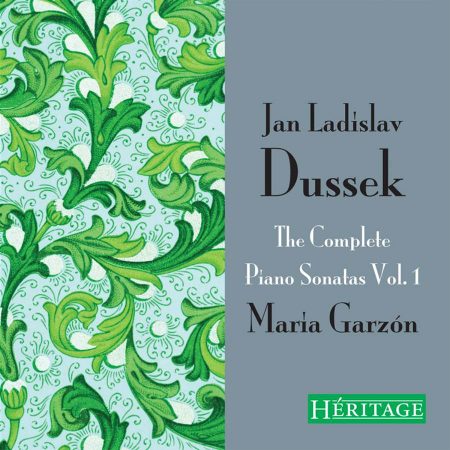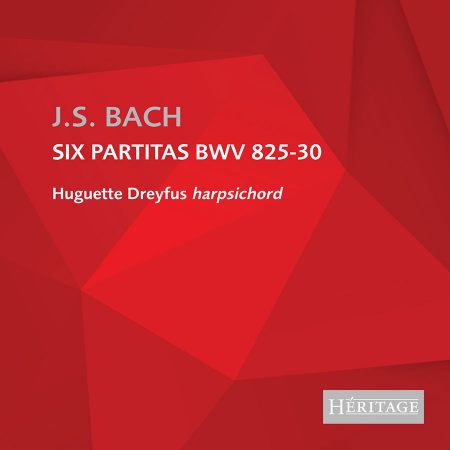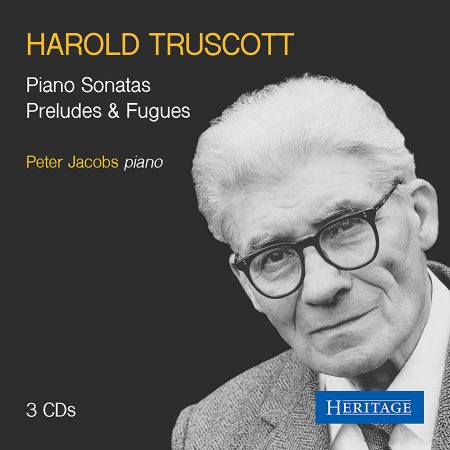Viktor Ullmann: Piano Sonatas 4, 5, 6 & 7
£12.00
Maria Garzon (piano)
HTGCD246 – 5060332660117
Viktor Ullmann was born into an assimilated Jewish family in 1898 and although he enrolled to study law in 1918, he soon came into contact with Schoenberg and his circle and the rich musical life of Vienna. He moved to Prague in 1919 where he worked with Alexander Zemlinsky and began to establish himself as a composer. He follows in the musical traditions of Mahler and Berg and, in a similar vein, often tempered even the bleakest music with sardonic humour. The Second Viennese School remained his primary stylistic focus but he refused to abandon tonality altogether, which led him to find a middle ground between Schoenberg’s radicalism and the lyrical romanticism of a previous generation. In 1942 he was deported to Theresienstadt (and later died in Auschwitz) where he composed the fifth, sixth and seventh piano sonatas which, along with the fourth sonata, appear on this Heritage issue. Maria Garzon, the acclaimed Spanish pianist, performs.
Piano Sonata No. 4, Op. 38
-
- Allegro Vivace 8.31
- Adagio 6.23
- Finale (vivace molto) 5.12
Piano Sonata No. 5, Op. 45 (von meiner Jugend)
-
- Allegro con brio 5.26
- Andante 5.26
- Toccatina (Vivace) 0.47
- Serenade (Comodo) 3.01
- Finale Fugato (Allegro Molto) 3.13
Piano Sonata No. 6, Op. 49
-
- Allegro Molto 4.23
- Allegretto grazioso 3.31
- Presto, ma non troppo 2.59
- Allegro Molto 2.54
Piano Sonata No. 7
-
- Allegro 3.44
- Alla marcia, ben misurato 2.59
- Adagio, ma con moto 8.55
- Scherzo 1.33
- Variationen und Fuge über ein hebräisches Volkslied 7.22
Total time: 76.28
Recorded at Wyastone Concert Hall in 2012
Reviews
Only logged in customers who have purchased this product may leave a review.





admin –
‘Garzón plays all four of these valuable works with obvious reverence allowing the music to sing out and weave its spell…I commend this disc to any admirer of Ullmann and the other composers who perished in the holocaust.’
MusicWeb International
admin –
‘All in all , the performances are very solidly anchored and mindful of the harrowing backdrop to the music. Interestingly, despite the darker references, which are powerfully evident, there is a good deal of mood contrast in these four works. The sound is lively (with a great quality to the bass) and there is much to recommend in the overall presentation.’
International Record Review, June 2013
admin –
‘The Fourth Sonata finds Garzón in command, rhythmically excellent………. The first movement of the Fifth Sonata is marked by many changes of mood, and again it is Garzón who triumphs. She finds the fun in the music as well as the funereal, along with the underlying, restrained, slinky jazz in the ‘Serenade’ fourth movement. (Of the Seventh Sonata) – Garzón’s Adagio here is vast and desolate……… balanced out by the Variations and Fugue on a Hebrew Folksong that comprise the finale, massive in conception and, here, delivery. Overall, perhaps, it is Garzón who seems closer to Ullmann, and one lives in hope for a companion volume.’
International Piano, September-October 2013